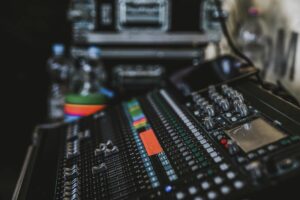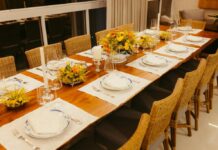Planning an event in Dallas? You need more than a venue and a schedule. You need AV that works—flawlessly.
Let’s be clear. People expect professional-grade sound and visuals now. If they can’t hear your speaker or see your slides, they’ll tune out. Fast.
That’s why finding the right dallas av rental partner is critical. It’s not just about renting speakers. It’s about delivering your message clearly and confidently.
What Does “AV” Actually Include?
AV = Audio Visual. It includes:
-
Microphones
-
Speakers
-
Video projectors
-
LED displays
-
Cameras
-
Audio mixers
-
Switchers
-
Stage lighting
-
Cables and adapters
If it helps people hear or see what’s going on, it’s AV.
And every piece has to work. Together. In real time.
What Happens When AV Goes Wrong?
You lose people. That’s the reality.
-
Your keynote starts, but the mic cuts out.
-
Your presentation plays, but the screen is too dim to read.
-
Your panel discussion begins, but half the room can’t hear the speakers.
You don’t get a second chance.
Poor AV makes everything feel cheap, even if your content is solid. It reflects badly on your brand, your team, and your planning.
What a Great AV Rental Partner Provides
Here’s what separates professionals from part-timers with gear:
1. Reliable Equipment
Old, dusty equipment doesn’t cut it. You want:
-
Tested, name-brand gear
-
Fresh cables and backups
-
High-lumen projectors
-
Clear, feedback-free microphones
If it looks like it came from a garage sale, walk away.
2. Onsite Technicians
Things go wrong. A real AV partner sends trained techs who:
-
Handle setup and teardown
-
Monitor sound levels
-
Adjust visuals in real time
-
Fix problems before you even notice
You shouldn’t be fiddling with knobs while trying to host.
3. Scalable Solutions
Whether it’s a 10-person board meeting or a 1,000-person product launch, your AV company should scale up or down based on:
-
Room size
-
Number of attendees
-
Number of speakers
-
Visual content needs
One-size-fits-all never works in AV.
How to Plan Your AV Setup (Step-by-Step)
Skip the guesswork. Follow this simple checklist:
✅ Know Your Audience Size
100 people need more sound power than 25. A bigger crowd = more speakers, more coverage.
✅ Know the Room
Ceiling height. Wall color. Windows. Echo potential. All these affect:
-
Audio clarity
-
Light spill
-
Screen brightness
A dark room with low ceilings needs different gear than a bright conference room.
✅ Outline Your Run of Show
Break down your event minute-by-minute:
-
Speaker at 9:00 AM (needs wireless lapel mic)
-
Panel at 10:00 AM (needs table mics + switcher)
-
Video playback at 11:00 AM (needs HDMI + audio output)
Each segment requires specific AV support.
✅ Build in Rehearsal Time
Test everything with the presenters. Check:
-
Mic levels
-
Slide transitions
-
Video playback
-
Camera angles (if recording)
No one wants surprises once guests arrive.
Events That Rely Heavily on AV
If your event includes any of the following, AV needs to be locked in:
Corporate Meetings
-
Wireless mics for presenters
-
Projector + confidence monitor
-
Clear audio throughout the room
Product Launches
-
Large LED screen
-
Branded visuals + sizzle reels
-
Spotlights on products
-
Audio cues and music transitions
Trade Shows
-
Booth monitors or video walls
-
Sound zones that don’t bleed over
-
Power management for multiple devices
Training Seminars
-
Sound reinforcement for instructors
-
Visual content that’s easy to follow
-
Handheld mics for Q&A sessions
Live Streams and Hybrid Events
-
Camera kits with switchers
-
Dedicated audio feeds for stream
-
Hardwired internet backup
-
Sync between in-room and remote content
These aren’t optional extras. They’re essentials.
Indoor vs. Outdoor AV: What Changes?
Indoor Events
-
Easier to control lighting and sound
-
More consistent acoustics
-
Less chance of weather issues
Still, you’ll need proper coverage for every corner of the room. Don’t assume “loud enough” is the same as “clear enough.”
Outdoor Events
-
Need weather-resistant gear
-
Speakers must be louder to cut through open air
-
Projectors must be brighter
-
Backup power is a must—preferably a quiet generator
-
All connections should be elevated or protected from ground moisture
Outdoor AV takes planning. Don’t leave it to chance.
Don’t Forget About Power
AV gear draws serious power.
One LED wall + sound system + lighting rig? That can pull 100 amps or more.
Questions to ask:
-
How many dedicated circuits does the venue offer?
-
Can your breakout rooms handle extra loads?
-
Do you need to rent distribution boxes or generators?
Never daisy-chain power strips. And don’t rely on a single outlet for a complex setup.
DIY vs. Professional AV Setup
Let’s keep this simple:
DIY works if:
-
Your group is under 20 people
-
You’re using one mic and a laptop
-
You’ve done AV before
-
You’re not recording or streaming
Hire a pro if:
-
Your audience expects polish
-
You’re managing more than one input
-
You want zero stress
-
You need real-time adjustments
-
You’re streaming or recording
Professionals make things look easy because they’ve handled every curveball. Don’t risk learning the hard way.
Why “Local” Matters in Dallas
Dallas is huge. The AV scene is active year-round. National chains might send gear from out of state, but they won’t know:
-
The venue layout
-
The loading dock situation
-
Local permit rules for power or outdoor audio
-
How to adjust for Texas heat and humidity
A Dallas AV rental company knows what works right here. That’s a huge advantage when things need to move fast.
Final Thoughts
Your AV setup controls how your event is experienced.
It shapes the energy, the flow, the focus. When it works well, everything else feels seamless. When it fails, nothing else matters.
Plan early. Be specific. Get help where you need it. And if you’re in Dallas, work with a team that knows the area and the gear.
Want your message to land? Your visuals to pop? Your audio to cut clean?
Start with the right dallas av rental partner—and don’t settle for anything less.








